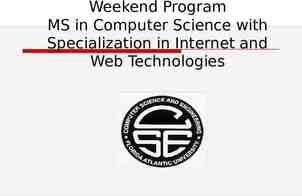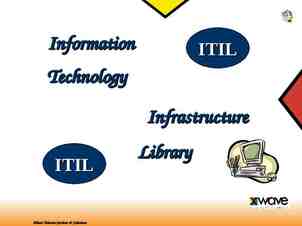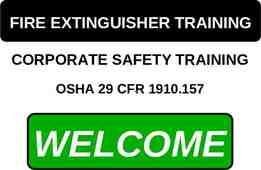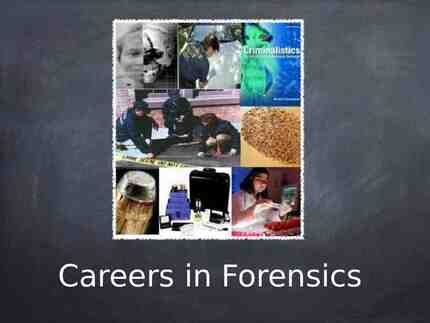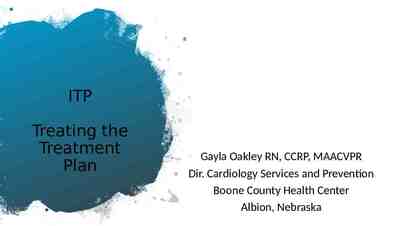Chapter Chapter 44 Product, Process, and Service Design 1
64 Slides809.00 KB

Chapter Chapter 44 Product, Process, and Service Design 1

Overview Designing and Developing Products and Services Process Planning and Design Major Factors Affecting Process Design Decisions Types of Process Designs Interrelationships Among Product Design, Process Design, and Inventory Policy Process Design in Services Deciding Among Processing Alternatives Wrap-Up: What World-Class Companies Do 2

Product/Service Design Stages of product/service design: Functional design (form, shape, size, materials, etc.) Process design (processing technology and tooling) Production design (production line & plant layout) 3

Impact of Product/Service Design Product/service quality Production/delivery cost Customer satisfaction 4

Important Topics in Product/Service Design and Development Developing New Products/Services Sources of Product Innovation Getting Them to Market Faster Designing and Developing New Services Improving Current Products/Services Designing for Ease of Production Designing for Quality 5

Sources of Product/Service Innovation Customers Managers Marketing Operations Engineering Research and Development (R&D) Basic research Applied research 6

Steps in Developing New Products 1. 2. 3. 4. 5. 6. 7. Technical and economic feasibility studies Prototype design Performance testing of prototype Market sensing/evaluation and economic evaluation of the prototype Design of production model Market/performance/process testing and economic evaluation of production model Continuous modification of production model 7

Steps in Developing New Products 1. Technical and Economic Feasibility Studies Determine the advisability of establishing a project for developing the product If initial feasibility studies are favorable, engineers prepare an initial prototype design 8

Steps in Developing New Products 2. Prototype Design This design should exhibit the basic form, fit, and function of the final product It will not necessarily be identical to the production model 9

Steps in Developing New Products 3. Performance Testing of Prototype Performance testing and redesign of the prototype continues until this design-test-redesign process produces a satisfactorily performing prototype 10

Steps in Developing New Products 4. Market Sensing/Evaluation and Economic Evaluation of the Prototype Accomplished by demonstrations to potential customers, market test, or market surveys If the response to the prototype is favorable, economic evaluation of the prototype is performed to estimate production volume, costs, and profits If the economic evaluation is favorable, the project enters the production design phase. 11

Steps in Developing New Products 5. Design of Production Model The initial design of the production model will not be the final design; the model will evolve 12

Steps in Developing New Products 6. Market/Performance/Process Testing and Economic Evaluation of Production Model The production model should exhibit: low cost reliable quality superior performance the ability to be produced in the desired quantities on the intended equipment 13

Steps in Developing New Products 7. Continuous Modification of Production Model Production designs are continuously modified to: Adapt to changing market conditions Adapt to changing production technology Allow for manufacturing improvements 14

Managing New Product Development Projects About 5% of all new-product ideas survive to production, and only about 10% of these are successful. It is best to cancel unpromising new-product/service development projects early! Employees often become emotionally caught up in these projects and are overly optimistic An impartial management review board is needed for periodic reviews of the progress of these projects. 15

Getting New Products to Market Faster Speed creates competitive advantages Speed saves money Tools to improve speed: Autonomous design and development teams Computer-aided design/computer-aided manufacturing (CAD/CAM) Simultaneous (concurrent) engineering 16

Tools to Improve Speed to Market Autonomous Design and Development Teams Teams are given decision-making responsibility and more freedom to design and introduce new products/services Time-to-market has been slashed dramatically Enormous sums of money have been saved Teams do not have to deal with the bureaucratic red tape ordinarily required to obtain approvals 17

Tools to Improve Speed to Market Computer-Aided Design/Computer-Aided Manufacturing (CAD/CAM) Engineers, using CAD/CAM, can generate many views of parts, rotate images, magnify views, and check for interference between parts Part designs can be stored in a data base for use on other products When it is time for manufacturing, the product design is retrieved, translated into a language that production machinery understands, and then the production system can be automatically set up. 18

Tools to Improve Speed to Market Simultaneous (Concurrent) Engineering Product/ Service Ideas Economic and Technical Feasibility Studies Product/Service Design Continuous Interaction Production Process Design Produce and Market New Product/Service 19

Improving the Design of Existing Products/Services Focus is improving performance, quality, and cost Objective is maintaining or improving market share of maturing products/services Little changes can be significant Small, steady (continuous) improvements can add up to huge long-term improvements Value analysis is practiced, meaning design features are examined in terms of their cost/benefit (value). 20

Designing for Ease of Production Ease of Production (Manufacturability) Specifications - Precise information about the characteristics of the product Tolerances - Minimum & maximum limits on a dimension that allows the item to function as designed Standardization - Reduce variety among a group of products or parts Simplification - Reduce or eliminate the complexity of a part or product 21

Designing for Quality Crucial element of product design is its impact on quality Quality is determined by the customer’s perception of the degree of excellence of the product/service’s characteristics Chapter 7 covers the principles of designing products/services for quality 22

Designing and Developing New Services Three general dimensions of service design are: Degree of Standardization of the Service Custom-fashioned for particular customers or basically the same for all customers? Degree of Customer Contact in Delivering the Service High level of contact (dress boutique) or low level (fast-food restaurant)? Mix of Physical Goods and Intangible Services Mix dominated by physical goods (tailor’s shop) or by intangible services (university)? 23

Designing and Developing New Services Differences Between New Service and New Product Development Unless services are dominated by physical goods, their development usually does not require engineering, testing, and prototype building. Because many service businesses involve intangible services, market sensing tends to be more by surveys rather than by market tests and demonstrations. 24

Process Planning and Design 25

Process Planning and Design System Inputs: Product/Service Information Production System Information Operations Strategy Process Planning & Design: Process-Type Selection Vertical Integration Studies Process/Product Studies Equipment Studies Production Procedures Studies Facilities Studies Outputs: Process Technology Facilities Personnel Estimates Process plans 26

Major Factors Affecting Process Designs Nature of product/service demand Degree of vertical integration Production flexibility Degree of automation Product/Service quality 27

Nature of Product Demand Demand fluctuates over time and is affected by product price, so pricing decisions and the choice of processes must be synchronized. Therefore, Production processes must have adequate capacity to produce the volume of the products that customers need. Provisions must be made for expanding or contracting capacity to keep pace with demand patterns. Some types of processes are more easily expanded and contracted than others. 28

Degree of Vertical Integration Vertical integration is the amount of the production and distribution chain that is brought under the ownership of a company. This determines how many production processes need to be planned and designed. Decision of integration is based on cost, availability of capital, quality, technological capability, and more. Strategic outsourcing (lower degree of integration) is the outsourcing of processes in order to react quicker to changes in customer needs, competitor actions, and technology. 29

Production Flexibility Product flexibility -- ability of the production (or delivery) system to quickly change from producing (delivering) one product (or service) to another. Volume flexibility -- ability to quickly increase or reduce the volume of product( or service) produced (or delivered). 30

Degree of Automation Advantages of automation Improves product quality Improves product flexibility Reduces labor and related costs Disadvantages of automation Equipment can be very expensive Integration into existing operations can be difficult 31

Product/Service Quality Old viewpoint High-quality products must be made in small quantities by expert craftsmen New viewpoint High-quality products can be mass-produced using automated machinery Automated machinery can produce products of incredible uniformity The choice of design of production processes is affected by the need for superior quality. 32

Types of Process Designs Product-Focused Process-Focused Group Technology/Cellular Manufacturing 33

Product-Focused Processes (conversions) are arranged based on the sequence of operations required to produce a product or provide a service Also called “production line,” “assembly line,” and flow line Two general forms Discrete unit – automobiles, dishwashers Process (Continuous) – petrochemicals, paper 34

Product-Focused Raw Material Components 1 Raw Material 4 Co m po n. Su ba ss em . 3 Components 1 Product/Material Flow Production Operation Assemblies 5 Fin. Goods 7 Subassem. Purchased 6 As se m b li es 2 Components, Subassemblies 35

Product-Focused Advantages Lower labor-skill requirements Reduced worker training Reduced supervision Ease of planning and controlling production Disadvantages Higher initial investment level Relatively low product flexibility 36

Process-Focused Processes (conversions) are arranged based on the type of process, i.e., similar processes are grouped together Products/services (jobs) move from department (process group) to department based on that particular job’s processing requirements Also called “job shop” or “intermittent production” Examples Machine shop Auto body repair Custom woodworking shop 37

Process-Focused Custom Woodworking Shop Cutting Planing Shaping Assembly Sanding Finishing 1 Job Job A Job B 1 2 5 6 5 6 77 33 2 44 3 44 Drilling Turning 38

Process-Focused Advantages High product flexibility Lower initial investment level Disadvantages Higher labor-skill requirements More worker training More supervision More complex production planning and controlling 39

Group Technology/Cellular Manufacturing Group Technology Each part produced receives a multi-digit code that describes the physical characteristics of the part. Parts with similar characteristics are grouped into part families Parts in a part family are typically made on the same machines with similar tooling 40

Group Technology/Cellular Manufacturing Cellular Manufacturing Some part families (those requiring significant batch sizes) can be assigned to manufacturing cells. The organization of the shop floor into cells is referred to as cellular manufacturing. Flow of parts within cells tend to be more like product-focused systems 41

Group Technology/Cellular Manufacturing Advantages (relative to a job shop) Process changeovers simplified Variability of tasks reduced (less training needed) More direct routes through the system Quality control is improved Production planning and control simpler Automation simpler 42

Group Technology/Cellular Manufacturing Disadvantages Duplication of equipment Under-utilization of facilities Processing of items that do not fit into a family may be inefficient 43

Group Technology/Cellular Manufacturing Candidates for GT/CM are job shops having: A degree of parts standardization Moderate batch sizes 44

Product/Process Design & Inventory Policy Standard Products and Produce to Stock Sales forecasts drive production schedule Maintain pre-determined finished-goods levels MRP forecast drives material ordering Custom Products and Produce to Order Orders set production schedule and drive material deliveries Design time (pre-production planning) may be required before production can be scheduled 45

Process Design in Services Some of the factors important in process design for products are also important in services: Nature (level and pattern) of customer demand Degree of vertical integration Production flexibility Degree of automation Service quality 46

Process Design in Services Three schemes for producing and delivering services Quasi-Manufacturing Customer-as-Participant Customer-as-Product 47

Process Design in Services Quasi-Manufacturing Physical goods are dominant over intangible service Production of goods takes place along a production line Operations can be highly automated Almost no customer interaction Little regard for customer relations Example – McDonald’s kitchen operation 48

Process Design in Services Customer-as-Participant Physical goods may be a significant part of the service Services may be either standardized or custom High degree of customer involvement in the process Examples: ATM, self-service gas station, grocery 49

Process Design in Services Customer-as-Product Service is provided through personal attention to the customer Customized service on the customer High degree of customer contact There is a perception of high quality Customer becomes the central focus of the process design Examples: medical clinic, hair salon 50

Process Reengineering The concept of drastically changing an existing process design Not merely making marginal improvements to the process A correctly reengineered process should be more efficient A smaller labor force is often the result 51

Deciding Among Processing Alternatives 1. 2. 3. Batch Size vs. Product Variety Capital Requirements Economic Analysis Cost Functions of Alternative Processes Break-Even Analysis Financial Analysis 1. 2. 3. 52

Product Focused, Dedicated Systems Product Focused, Batch System Cellular Manufacturing Process-Focused, Job Shop Small Batch Size Large Process Design Depends on Product Diversity and Batch Size Few Number of Product Designs Many 53

Capital Requirements The amount of capital required tends to differ for each type of production process Generally, the capital required is greatest for productfocused, dedicated systems Generally, the capital required is lowest for processfocused, job shops The amount of capital available and the cost of capital are important considerations 54

Economic Analysis Cost Functions of Processing Alternatives Fixed Costs Annual cost when production volume is zero Initial cost of buildings, equipment, and other fixed assets Variable Costs Costs that vary with production volumes Labor, material, and variable overhead 55

Cost Functions of Processing Alternatives Annual Cost of Production ( 000) op h S b o J 2,000 ine L y l b m e s s Autom. A 1,500 1,000 500 Job Shop Preferred 100,000 Cellular Manufacturing Preferred f. u n a M r a lul l e C Automated Assembly Line Preferred Units Produced Per Year 250,000 56

Cost Functions of Processing Alternatives Example Three production processes (A, B, and C) have the following cost structure: Fixed Cost Variable Cost Process Per Year Per Year A 120,000 3.00 B 90,000 4.00 C 80,000 4.50 What is the most economical process for a volume of 8,000 units per year? 57

Cost Functions of Processing Alternatives Example TC FC v(Q) A: B: C: TC 120,000 3.00(8,000) 144,000 per year TC 90,000 4.00(8,000) 122,000 per year TC 80,000 4.50(8,000) 116,000 per year The most economical process at 8,000 units is Process C, with the lowest annual cost. 58

Economic Analysis Break-Even Analysis Widely used to analyze and compare decision alternatives Can be displayed either algebraically or graphically Disadvantages: Cannot incorporate uncertainty Costs assumed over entire range of values Does not take into account time value of money 59

Break-Even Analysis Example Break-Even Points of Processes A, B, and C, assuming a 6.95 selling price per unit Q FC / (p-v) A: B: C: Q 120,000 / (6.95 - 3.00) 30,380 units Q 90,000 / (6.95 - 4.00) 30,509 units Q 80,000 / (6.95 - 4.50) 32,654 units Process A has the lowest break-even point. 60

Economic Analysis Financial Analysis A great amount of money is invested in production processes and these assets are expected to last a long time The time value of money is an important consideration Payback period net present value internal rate of return Profitability index 61

Deciding Among Processing Alternatives Assembly Charts (Gozinto Charts) Macro-view of how materials are united Starting point to understand factory layout needs, equipment needs, training needs Process Charts Details of how to build product at each process Includes materials needed, types of processes product flows through, time it takes to process product through each step of flow 62

Wrap-Up: World Class Practice Fast new product introduction Design products for ease of production Refine forecasting Focus on core competencies . less vertical integration Lean production Flexible automation Job shops move toward cellular manufacturing Manage information flow . automate and simplify! 63

End End of of Chapter Chapter 44 64

